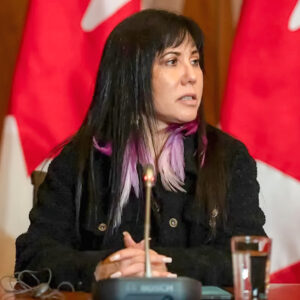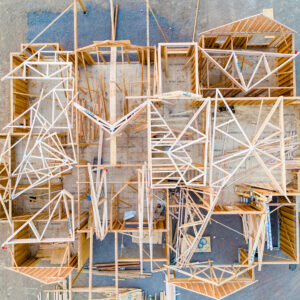
TORONTO – What exactly is Canada celebrating this summer?
That is the question being asked by artist Tia Cavanagh as she finishes up the final year of her drawing and painting program at OCAD University in Toronto.
“I’m inspired by many things, but currently a lot of my work has been inspired by the celebration of Canada’s 150th birthday,” said Cavanagh. “What exactly are they celebrating and spending $5 billion on?”
Cavanagh is Ojibway from Northern Ontario, near the shores of Lake Huron. She has lived and studied in Havelock, Norwood, Peterborough, Montreal and currently lives in Toronto while she completes her education. Cavanagh said it is very important to bring up and discuss indigenous issues through her art.
“Be loud and be proud; confront — that’s how I am with my art,” she said. “The celebration of Canada’s 150 years is a great opportunity for artists like myself to speak up and bring awareness to issues that indigenous people are still facing today.”
Cavanagh’s art covers a wide array of topics that include Canada’s Residential School System, colonization, and more. She recently created a painting that shows the Canadian flag reimagined with the head of Canada’s first prime minister, John A. Macdonald in place of the maple leaf.
“It reminds people of Canada’s role in creating the colonial system that assimilated indigenous people,” she said.
“My goal is to have everyone talk about the past, present and future. I want to invite all Canadians to the table so we can have this conversation about reconciliation,” she said, mentioning that being among the small percentage of the indigenous population at OCAD she has had many opportunities to start these kinds of conversations with her peers and teachers.
The students often critique one another’s work and Cavanagh said that she appreciates the reactions and criticisms from all the other students.
“How an audience reacts shows how your piece affects them,” she said. “Sometimes my work starts a good dialogue about my themes. Other times there is silence. And even still sometimes my work evokes a lot of emotion, and there are times when the audience doesn’t know what to feel, or why they feel what they feel about certain pieces — and it’s OK to feel that way.”
Cavanagh comes from a creative family. Not only artistically, but also in how her family members solve problems, and work through different situations life brings forward.
“A lot of my creativity comes from my upbringing and how I watched my family think and work through things critically.”
Her grandmother, Mary Cavanagh, went to St. Anne’s Residential School in Northern Ontario. Mary passed on in the early 2000s, yet had a great impact on Cavanagh’s life and art.
“She meant a lot to me and it’s important for me to talk about her life and time spent in residential school,” she said.
Cavanagh doesn’t really have a favourite medium. Although she is often found painting, she uses a lot of mixed media and is just as likely to paint, as she is to create something from recycled milk cartons.
“My ideas and mediums vary from project to project,” she said. “My work is rooted in ideas, and that’s how I usually begin a piece. Sometimes I just sit and stare at a project for hours and hours before I really dig in. I take that time to really become grounded in my ideas.”
Cavanagh has little time for a social life, working full-time while finishing her program. When she finds a few spare moments she loves to be outside and in nature.
“I don’t like living in the city at all,” she said. “I love being outside and in nature, and near, in, or on the water. Nature grounds me.”
OCAD hosted its annual Graduate Exhibition May 3 to May 7 at 100 McCaul Street. More than 900 graduating students showcased their artwork, with one student in each program winning a medal.






